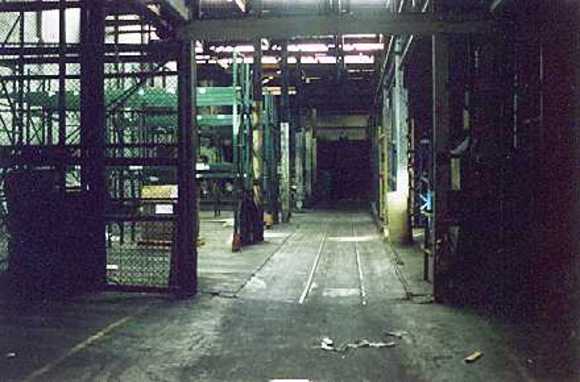| Back to search results » | Back to search page » |
|
Kinnears Rope Works
Location130 Ballarat Road,, FOOTSCRAY VIC 3011 - Property No B7185
File NumberB7185LevelState |
|
Statement of Significance
What is significant? Kinnear's Ropeworks is a substantial early twentieth century factory complex with a range of one and two-story red-brick and corrugated-iron industrial buildings built densely on an island site between Ballarat road and Kinnear Street in Footscray. The factory was established by George Kinnear in 1902, and extensively rebuilt following a fire in 1907, then progressively added to. The long rope walk can still be discerned on the site by a sequence of low gable roofed structures and the remaining machinery and tramline inside.
How is it significant? Kinnear's Ropeworks is significant for aesthetic/architectural, historic, social and scientific (technical) reasons at a State level.
Why is it significant? Kinnear's Ropeworks is of historical significance as one of Victoria's three major ropeworks (Millers in Brunswick and Donaghy's in Geelong), and the largest and longest continually operating in Melbourne (1902-2002). It is also significant for its association with George Kinnear - a dominant industry figure and technological pioneer in rope and fibre. It is significant for the association with the close-knit community of ropemakers including those in the Miller and Donaghy companies, for the connection with Footscray as the industrial hub of Victoria, for its role in the war effort and for its existing and continuing place in local community as a major employer. As one of a number of Melbourne rope walks, the site contributes to an understanding of the role of Melbourne's Ports in Australian Shipping, with few other comparable works being known from other states.
It is of technical significance for the survival of one of only two rope walks in Victoria, which retains any ropemaking machinery or the form of the ropewalk buildings. (Substantial demolition has recently occurred at the Geelong rope works). It retains the only known early twentieth century ropemaking machinery in Australia (the Geelong ropemaking machinery is generally of post 1950s date). It is also rare for the survival of specific components including the winding gear, top cart and galantine, and evidence of the rope laying troughs, wire control lines and other fittings. The rope walk and its machinery are of technical significance in terms of the size of rope that could be manufactured at this site. The few large ropeworks being the only places where very large diameter ships ropes could be made. The survival or related buildings and structures such as the boiler and engine house, chimney and some plant which reflect the original steam power supply for the rope works, adds to the understanding of the technology employed in early ropemaking in Victoria.
It is of aesthetic or architectural significance as a local landmark, particularly for its visual and streetscape qualities, principally of the expanses of red brick double-height perimeter walls, the dominant chimney, and the extensive signage along the parapet frieze, which was designed specifically for this purpose. Specific components of the works have architectural and aesthetic value including the Moderne or Art Deco elements of the Workers Hall and its stage, the timber lined and limed panelling of the drafting office and the curved brickworks on many of the building corners.
It is of Social significance as a local landmark and as a community focus and a workplace. The surviving workers hall, in part reflects this and also demonstrates the role of the company in the social life of its employees. It is quite unusual for such factory workers' amenities to survive today. Many local families have a strong association over several generations as Kinnears was a key workplace particularly for women, Aboriginal people and post war migrants.
Classified: 08/09/2004
Group
Manufacturing and Processing
Category
Factory/ Plant




